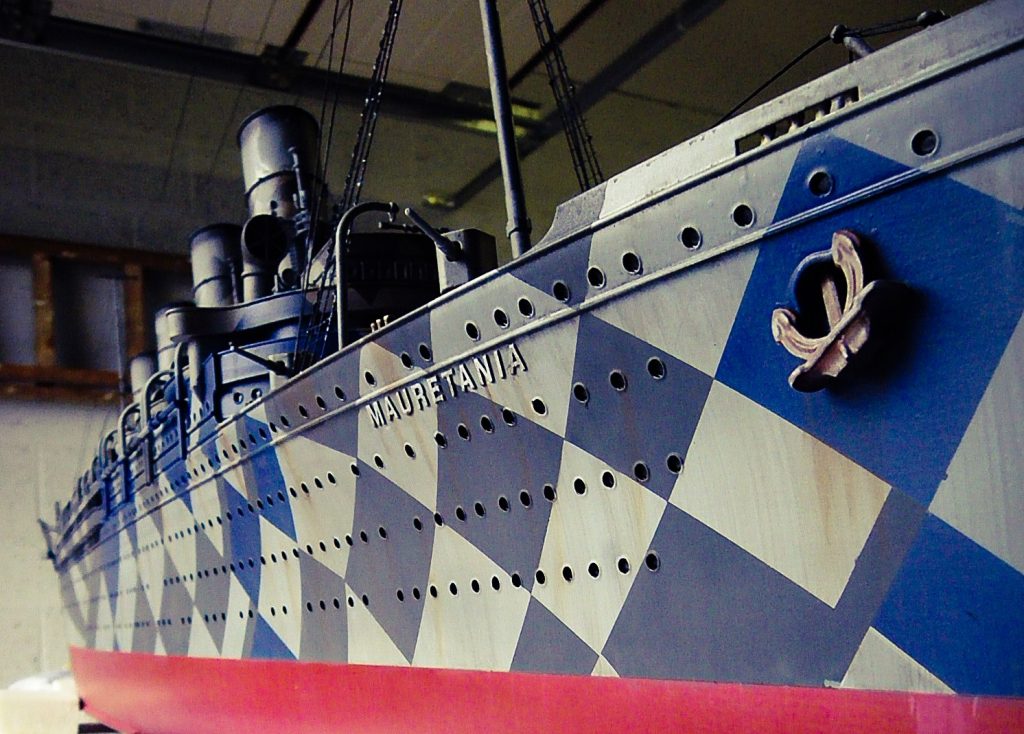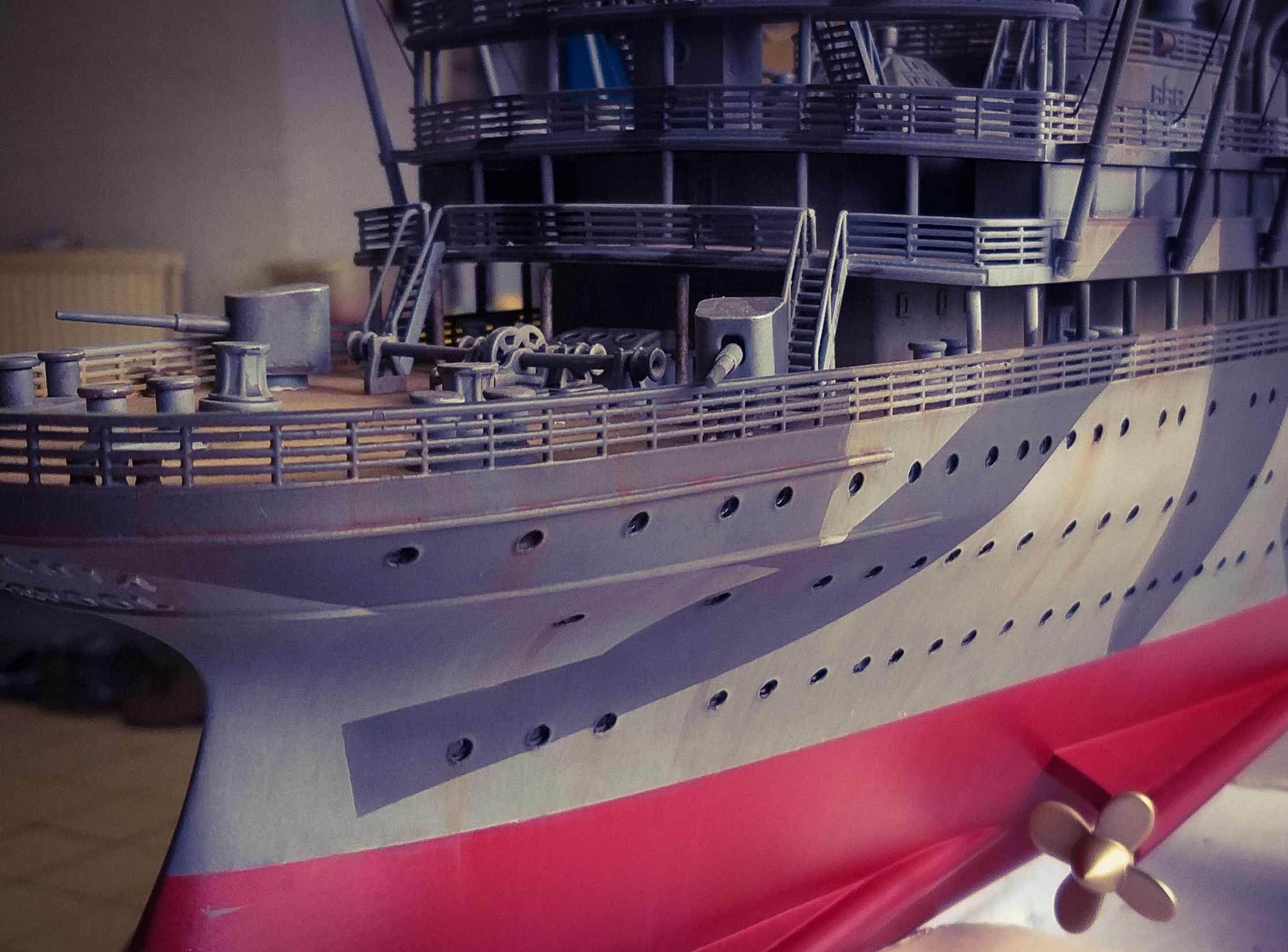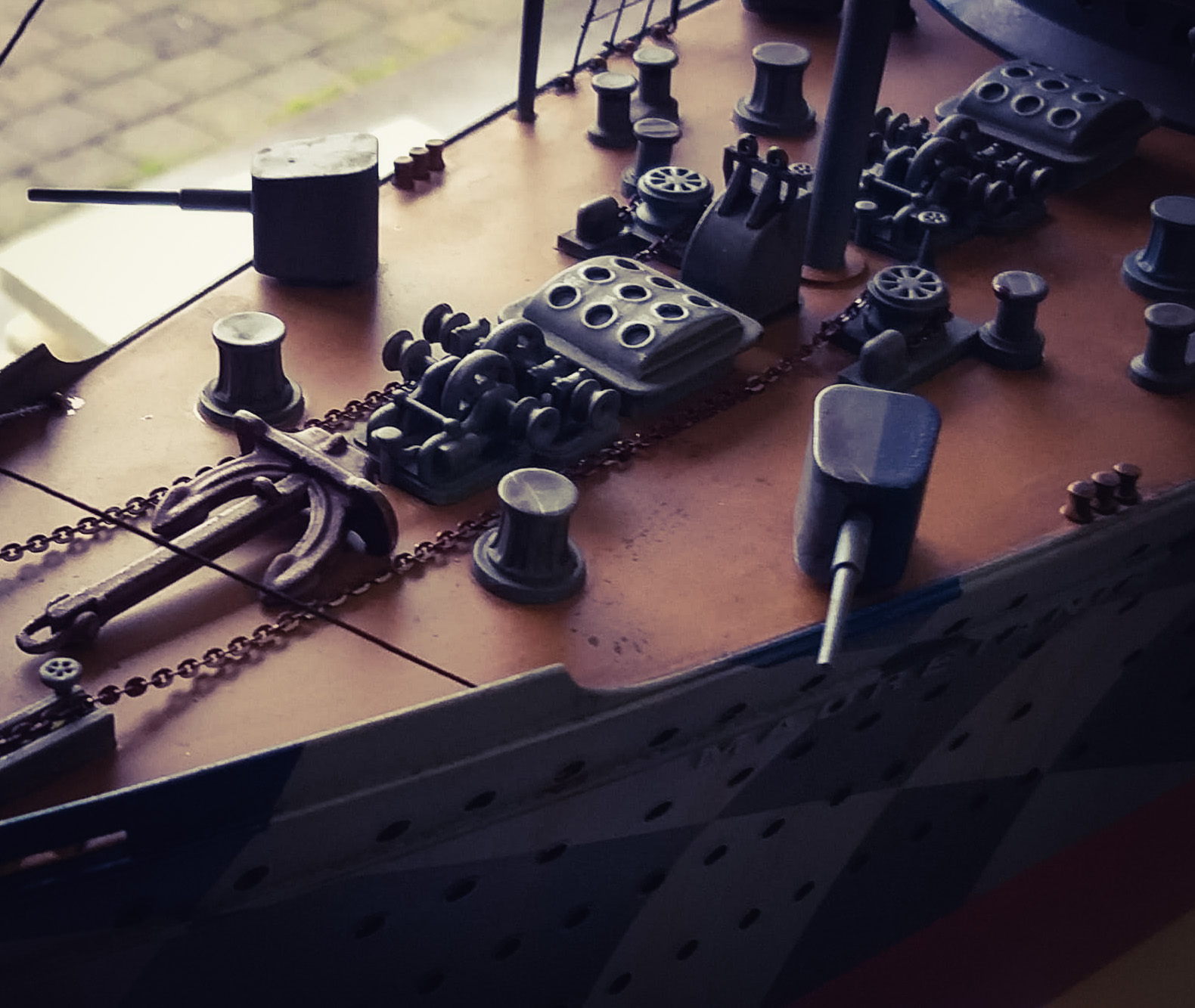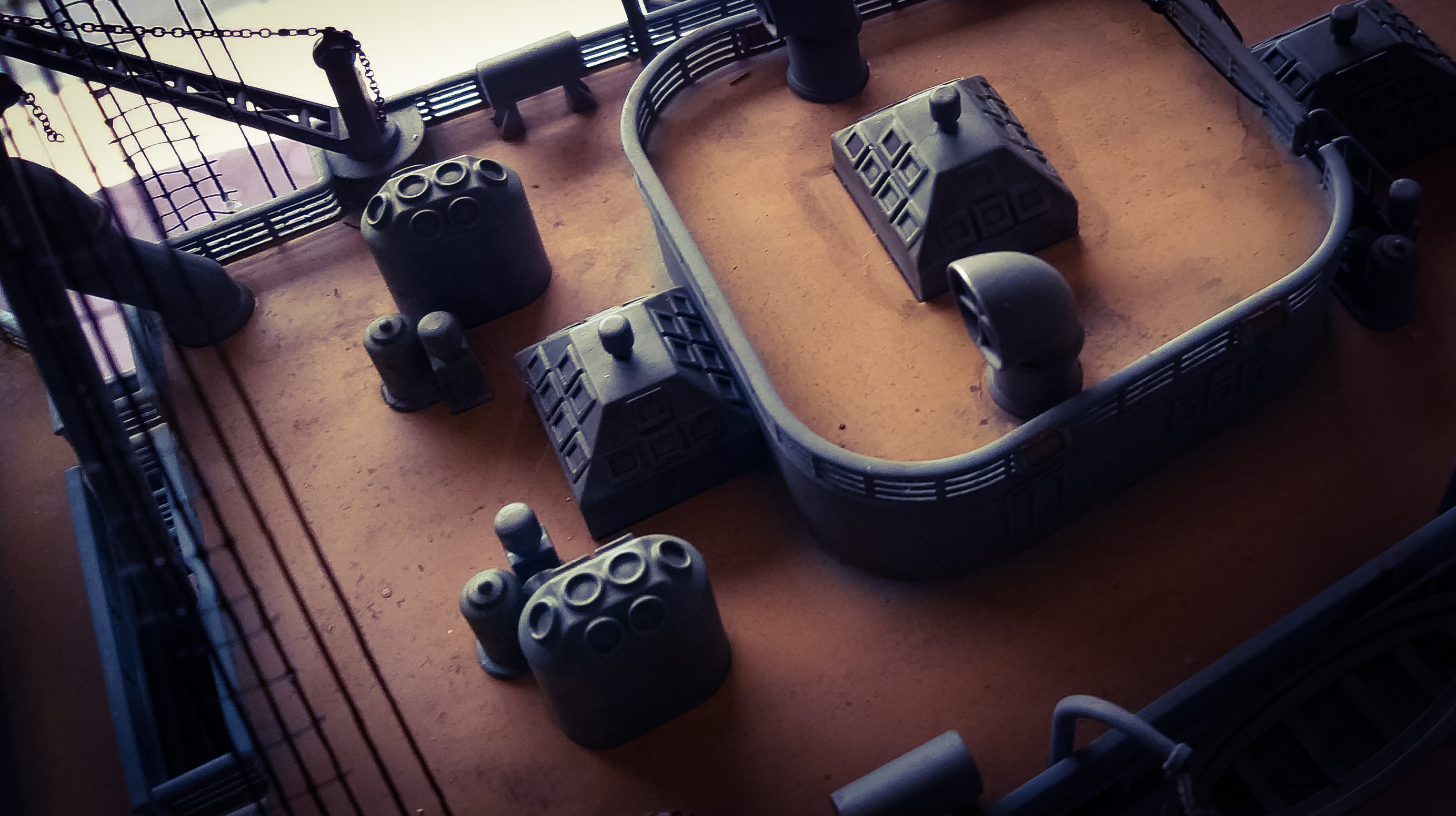
Massive 3D-Printed Replica Of A Legendary WWI Ship Makes Waves
Nestled along the coast of Belgium is the mostly open-air Raversyde in Ostend with its bunkers, observation posts, and subterranean corridors. This museum is unique in that it commemorates sites that were instrumental in both world wars: in WWI as a coastal battle and during WWII as the site where Nazi Germany built the Atlantic Wall as a defense. For the museum’s opening weekend of the 2020 season, they prepared a new focal point in the exhibition of the First World War Coastal Battery. The highlight of the exhibit is a massive, highly detailed, 3D-printed model of the Mauretania that carried out different but essential functions during WWI.

3D printing made the most sense for Raversyde’s Mauretania model due to the size, material, and timing of the project. Image credit: Trudo Modelbouwvereniging
The Mauretania was the largest passenger ship built in 1906 and, despite its size, held awards for its speed for over 20 years. These two factors made it an ideal candidate to effectively be used for troop transportation during WWI. By the end of the war, the ship was painted in what is called dazzle painting, which played a vital role in protecting naval and trade vessels during the World War. The jagged patterns and clashing colors camouflaged the ships and made it hard for enemies to get a fix on the target. During the war, the Mauretania carried British, Canadian, and American troops and was able to evade German U-boats with its speed. As the need arose, the Mauretania was even transformed into a hospital ship. Eventually, it went back to troop transport and ended up transferring soldiers from many Allied countries.
Raversyde wanted to highlight the use of dazzle camouflage during the First World War by creating their own large-scale model for the exhibit. They had previously used another museum’s historical wooden model on loan but wanted to realize their own with a length of over 1.7 meters to impactfully fill their new exhibition space. Additionally, since this part of the museum is exposed to the elements, they wanted the model to be able to withstand weather fluctuations, which is not the case with traditional wooden models. From their previous experience with other exhibits, they knew that 3D printing made the most sense for their project due to the size, material, and timing of the project.
The museum ended up choosing to work with i.materialise because they had previously worked with us before on a recreation of the 3D model of the whole First World War battery of the site.
“As a public organization we worked with the procedure of a tender where multiple firms were asked to put in an offer, we decided to select by the criterion of the price, and i.materialise came out as the winner. Because of their previous work, we knew what quality to expect,” according to Kathleen Ribbens, the Registrar and Collection Caretaker at Raversyde.

Mammoth Stereolithography gave the high level of detail necessary for creating the intricate scale model. Image credit: Trudo Modelbouwvereniging
With a tight deadline for the looming opening, the design and engineering team quickly got to work. They received a design file of the ship from the museum’s external contracted designer and used their expertise to set up all the important but minuscule details and pieces in an orientation that made the most of the material. This also ensured that the detailed pieces would not get lost in the process.

Mammoth Resin gave the model painters a smooth surface to work on. Image credit: Trudo Modelbouwvereniging
The Mauretania model was printed with our Mammoth Stereolithography machines, which are capable of achieving the highest level of detail as well as the sheer bulk required to print such a large structure. Mammoth resin was used which is constructed from liquid resin that is then hardened with a laser and suitable for printing large models up to 2,100 x 700 x 800 mm. This material was chosen because the ship needed to have a smooth surface for the model to be painted afterward. After the ship was printed, the Materialise team completed the initial primer paint layer before shipping it to the museum on schedule. After Trudo Modelbouwvereniging, the model painters in Sint-Truiden, Belgium, gave the ship the dazzle paint job, it went on display, ready to shine for the opening weekend.
After seeing the final result, Kathleen said, “I am really pleased about the detailed work and especially the experts at i.materialise who facilitated the timely delivery!”
Do you have a project involving scale models? Upload your model today!
Keep up-to-date with our top community projects and news by subscribing to our monthly newsletter.
This project was commissioned by Raversyde, Atlantikwall, Oostende, Provincie West-Vlaanderen
Recommended Articles
No related posts.



